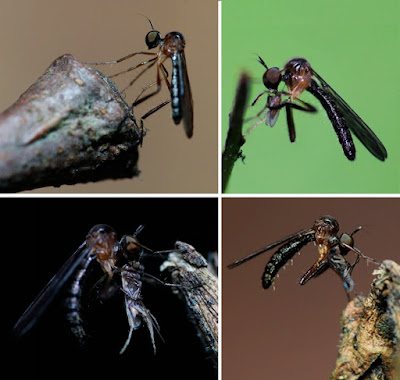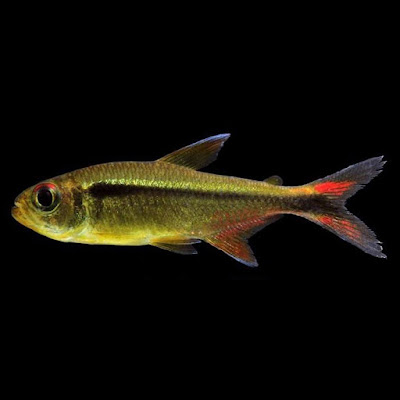[Most Recent Entries] [Calendar View]
Sunday, March 15th, 2020
| Time | Event | ||||
| 7:34a | [Entomology • 2020] Chvalaea yolkamini (Diptera: Hybotidae) • the First Mexican Species of Genus discovered on Instagram
Abstract A new species of Chvalaea Papp & Földvári, 2002 is discovered after a photo on a social network and later collected in nature. Chvalaea yolkamini sp. nov. is described and illustrated here. In addition, for the first time we describe eggs with scanning electron microscopy and report on adult hunting behavior. Keywords: Diptera, Empidoidea, dance flies, Ocydromiinae, Mexico
Chvalaea yolkamini sp. nov. Etymology. Yolkamini in Nahuatl, a native language in Mexico, means hunter, in reference to the predatory habits of this species of Chvalaea. Remarks. Chvalaea yolkamini sp. nov. is similar to C. sinclairi on the basis of the short postpedicel, about 1.5 times the length of scape and pedicel combined, apical pair of convergent scutellar setae thin and short, and short, blunt, black spine-like ventral setae absent on hind tarsomere 2. But the new species differs by the narrow hypandrium, about 2 times longer than wide, hypoproct with apex slightly sinuate in the middle in C. yolkamini sp. nov., while the apex is truncate in C. sinclairi and fore and mid tarsomere 1 pale yellow with dark apex in C. yolkamini sp. nov., while all fore and mid tarsi are pale brown in C. sinclairi. Santiago Jaume-Schinkel, Matheus M.M. Soares and Luana M. Barros. 2020. Chvalaea yolkamini sp. nov. (Diptera: Hybotidae), the First Mexican Species of Genus discovered on Instagram. Zootaxa. 4748(3); 592–600. DOI: 10.11646/zootaxa.4748.3.12 | ||||
| 7:59a | [Ichthyology • 2020] Hyphessobrycon chiribiquete • A New Species of Hyphessobrycon Durbin (Characiformes: Characidae) from the western Amazon basin in Colombia and Peru
ABSTRACT Hyphessobrycon chiribiquete n. sp. is described from the Río Caquetá drainage in Colombia and the Río Ucayali drainage in Peru, western Amazon. The new species is diagnosed from its congeners by having the following combination of characters: a conspicuous narrow midlateral stripe, starting on sides of body behind the opercle near the lateral line; lateral stripe overlapped anteriorly with a vertically elongated humeral blotch; inner premaxillary teeth pentacuspid; margin of anal fin falcate in mature males, with a relatively well‐developed anterior lobe. Keywords: Río Caquetá drainage, Río Ucayali drainage, Serrania de Chiribiquete, Hyphessobrycon agulha, Neotropical diversity
Hyphessobrycon chiribiquete new species Etymology: The specific epithet refers to the type locality of this species, in the Parque Nacional Natural Serranía de Chiribiquete, and territory of the ancient indigenous Carijonas. It is to be treated as a noun in apposition. Chiribiquete National Natural Park is located in the northwest sector of the Colombian Amazon in the departments of Caquetá and Guaviare. The nearest large town is San Juan de Guaviare. It is the largest national park in Colombia and the largest tropical rainforest national park in the world. It was established on 21 September 1989 and has been expanded twice, first in August 2013 and then in July 2018. The park occupies about 43,000 km2 (17,000 sq mi) and includes the Serranía de Chiribiquete highlands and surrounding lowlands, which are covered by rainforest and savannas. (WWF 2018, Website of Parques Naturales Nacionales de Colombia 2019). C. A. García‐Alzate, F. C. T. Lima, D. C. Taphorn, J. I. Mojica, A. Urbano‐Bonilla and T. F. Teixeira. 2020. A New Species of Hyphessobrycon Durbin (Characiformes: Characidae) from the western Amazon basin in Colombia and Peru. Journal of Fish Biology. DOI: 10.1111/jfb.14319 |
| << Previous Day |
2020/03/15 [Calendar] |
Next Day >> |




